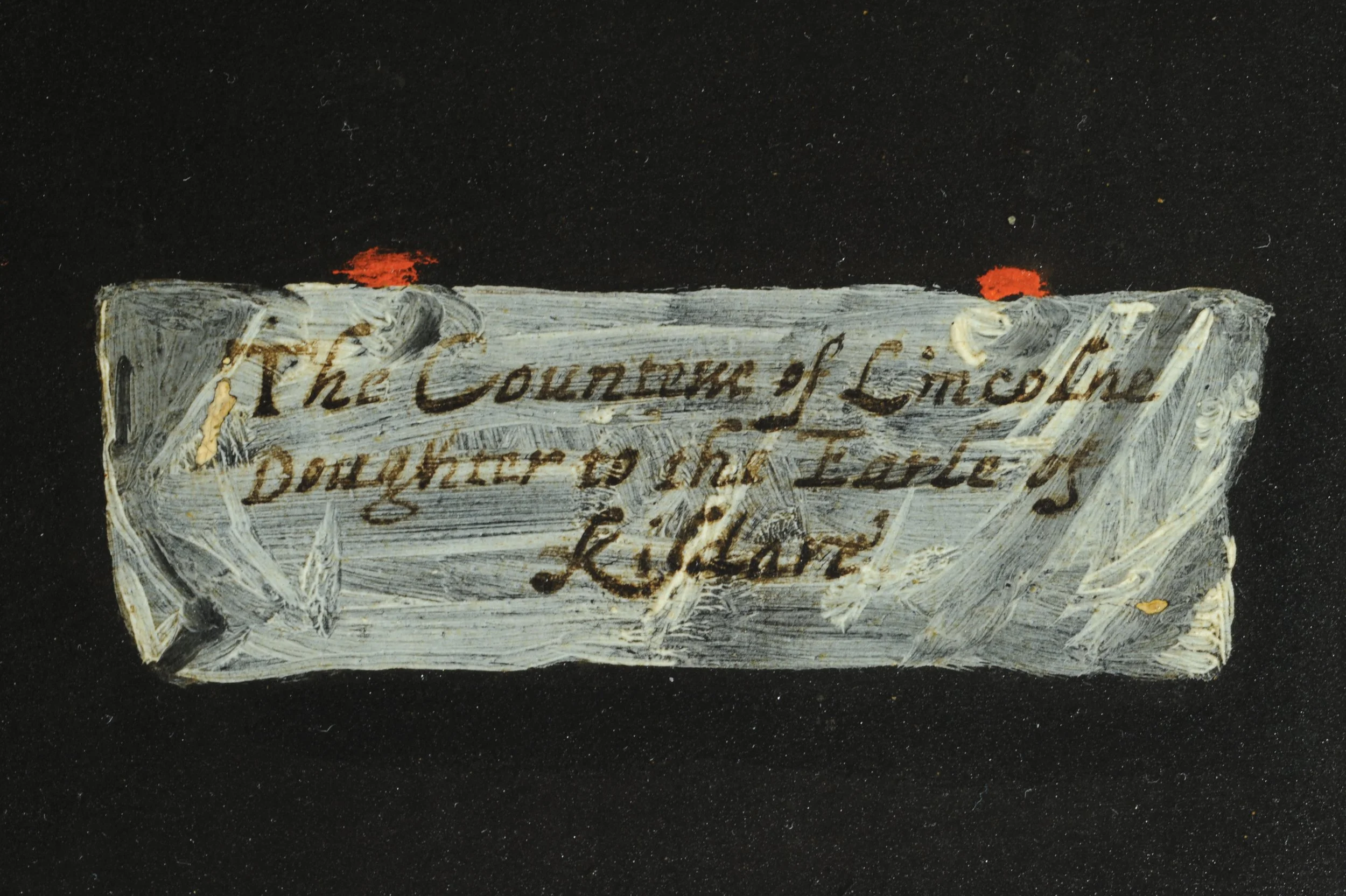All In The Details
Sometimes, life is in the details. In the museum world, sometimes an object’s smallest detail can provide vast amounts of information. There are many examples of this in the collection at Agecroft Hall & Gardens. The documents we have detail the names of the people who once lived and worked at Agecroft. Some of our objects are engraved, giving us a wealth of information about who created the object or for whom it was intended. One of our paintings, the portrait of Elizabeth Fitzgerald, Countess of Lincoln (discussed previously on this blog here) has a fascinating detail in the upper left corner: a Lumley cartellino.
The small cartellino, an illusionary technique used on paintings to often include either the sitter’s name or the painter’s name, is painted to look like a piece of parchment. On this painting, it identifies the subject as “Countess of Linconle, daughter to the Earle of Kildare.” Lumley cartellinos are very recognizable, and many paintings that were once in the collection of John, Lord Lumley (c. 1533-1609) bear this mark--there is no confusing a Lumley cartellino with any other.
Lord Lumley was one of the first great art collectors in England. His collection, which included over 300 paintings, was only rivaled by that of King Henry VIII. Lumley purchased his own works to add to his collection but he inherited a large portion when his father-in-law, Henry FitzAlan, Lord Arundel, died in 1580. Lumley also inherited Nonsuch Palace, a royal palace that had been built by Henry VIII in Surrey, England, from Arundel.
In 1590, Lumley’s house steward inventoried his three residences, Nonsuch Palace, Lumley Castle (the family seat located in County Durham in northeast England), and his house on Tower Hill. This inventory provides very detailed information on Lumley’s “moveable possessions” which makes it extremely useful to modern researchers. There are even drawings of statues and furniture included in the inventory. Luckily, many of the paintings have an artist attached. The 1590 inventory seems to have been drawn up because Lumley had to give Nonsuch Palace back to Queen Elizabeth I as repayment for debts he held with the Crown. There is also a 1609 inventory which was drawn up for probate on the death of Lord Lumley (April 11, 1609). The 1609 inventory only included goods found at Lumley Castle.
How does this small cartellino help us learn more about the portrait now held in Agecroft Hall’s collection? The cartellino easily points researchers to the Lumley inventory. The Fitzgerald portrait is listed in both the 1590 and 1609 inventories, so we know it was in Lumley’s collection by 1590. The portrait remained at the castle until it was listed for sale in 1785. The painting did not sell at that auction. The next mention of the portrait was in the 1790 travelogue of a man named Penant who stopped at Lumley Castle during a journey through Scotland. In his Tour in Scotland Penant did not have nice things to say about poor Elizabeth: “[she] is so ill-favoured in this picture that I must give it to his [Edward, Earl of Lincoln] first wife, Elizabeth Blount.” In 1807, the portrait was sold at auction from Lumley Castle to an unknown buyer. The painting eventually made its way into the Lincoln family collection (yes, Elizabeth’s Lincoln family), but in 1939, they sold it in a family estate sale where it was purchased by a W. Sabin before disappearing from sight again. An article from 1959 lists the portrait’s whereabouts as unknown, and there is no mention of the painting again until it was bought for the permanent collection of Agecroft Hall in 1977.
Small details bring objects to life. While the details of the portrait tell us so much about Elizabeth Fitzgerald herself, the small cartellino located in the upper left hand corner of the painting gives us some insight into the past of the painting itself and who commissioned it. So much information can be read from this one portrait—come take a look next time you are on tour here at Agecroft Hall & Gardens.


